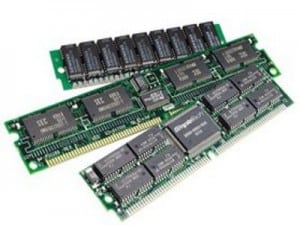 New IT Value Propositions – Moving from Operations to Customers and Innovation
New IT Value Propositions – Moving from Operations to Customers and Innovation
Throughout everything I do as a consultant, I try to categorize my activities into the three key areas of business: operations, customers, and innovation. Even though I have been working primarily in the supply chain areas of SAP since 1994 (SD – Sales and Distribution, MM – Materials Management, and PP – Production Planning), I have been focusing more on the key value areas of customers and innovation. I focus on customers and innovation because that is where business is done.
When a business focuses only on processes, operations, and cost reductions, business and IT efforts face mass commoditization.
Certainly, every company must contain, control, and reduce costs to stay competitive in the marketplace. More and more, however, the companies that experience long-term success are those with a more balanced focus on retaining and acquiring customers while innovating new products or services.
Where IT Has Been– And Where IT Is Going
At times, businesses and technology focus on operations but do little to directly address the customer or innovation. It is almost as if technology organizations only understand Henry Ford’s assembly line mentality with business processes. The operations focus can be seen in ERP applications (like SAP), EDI or interfaces, machine logic controllers, wired and then wireless data transfer, the Internet, or any other number of technological advances.
Today’s leading companies are integrating their IT operations into the fabric of the business. Ultimately, they are focused on innovation and customers.
Today, innovation is about much more than new products. It is about reinventing business processes and building entirely new markets that meet untapped customer needs. Most important, as the Internet and globalization widen the pool of new ideas, it’s about selecting and executing the right ideas and bringing them to market in record time.
In the 1990s, innovation was about technology and control of quality and cost. Today, it’s about taking corporate organizations built for efficiency and rewiring them for creativity and growth. [FN1 – excerpted from “The World’s Most Innovative Companies,” see the footnote link below.]
In announcing the recent list of innovative companies, MIT noted these companies are “setting the agenda in an increasingly important market, on the verge of disrupting an established market, or creating an entirely new market.” (BostInnovation 2/22/11 citing an MIT study of innovative companies).
The Operations IT Focus Has Turned All Products Into Commodities
This better, faster, cheaper automation paradigm has worked well when processes were mostly manual and labor intensive. As more and more processes are automated and streamlined, further technological advances provide less and less return at higher costs. Along with that, the cost-cutting chase and the speed of automation/process improvement have dramatically accelerated the rate of commoditization of products and services.
As just one example of how dramatic this transformation is, I used to own an iPhone. On that iPhone, I had a free application that: a) used the phone camera to capture and process product bar codes, and then b) went online to immediately price-compare that product to local and online sources. My wife loved it– she could be out shopping and do real-time price comparisons. What does this mean?
Every major product seller is now a commodity outlet. Every product can be comparison shopped in real time, making it a commodity as well.
As a product supplier, your customer does not have the option of you re-numbering, or using a different SKU. Why? Because the same ability to search for the lowest price is the tool that finds your product to begin with. Changing the SKU would be more counterproductive to sales than engaging in the commodity-based price wars. Not only that, all of the supply infrastructure and customer systems coded to that SKU would need to be updated. Good luck on that!
The future of technology and business integration requires businesses to focus on the two areas most neglected by IT or ERP or technology: innovation and direct customer interaction. The real question is, what will tomorrow’s successful customer-focused business models look like after all of the hype?
Next Generation Enterprises – Will They Transform Business and Markets?
We are beginning to see seeds of transformation being sown. All around the globe, companies are beginning to focus more directly on innovation and customer focus through technology integration.
The hype around social media and Web 2.0 has given way to practical applications, user experience, and marketplace agility. The same can be said for cloud computing coming into its own.
However, these are all IT solutions.
What about business integration?
What are the details of how technology and social media will bring about a revolution in customer focus and innovation?
——————————-
[FN1] The World’s Most Innovative Companies (Bloomberg)
http://www.businessweek.com/magazine/content/06_17/b3981401.htm





